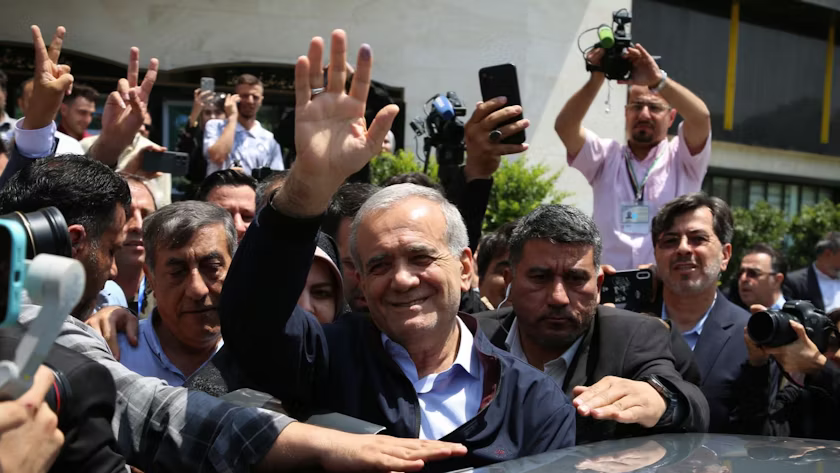
In a pivotal moment for Iran's political landscape, the country is set for a runoff presidential election between moderate Massoud Pezeshkian and hardline candidate Saeed Jalili. This development follows a snap election marked by significant voter apathy and deepening economic and social issues.
The initial vote count revealed a tight race, with Pezeshkian, a reformist voice, garnering over 5 million votes, while Jalili, a protege of the supreme leader, received over 5.5 million votes. The turnout, however, was notably low, with only about 40% of eligible voters participating, reflecting widespread disillusionment among the populace. This turnout is even lower than the already diminished participation in the 2021 presidential election, indicating a growing trend of voter disengagement.
The Candidates and Their Stances
Massoud Pezeshkian is viewed by many as a beacon of hope for moderate reform in Iran. Known for his more progressive stance, Pezeshkian’s platform promises social and economic reforms aimed at addressing the grievances of many Iranians who are frustrated with the current state of affairs. His supporters, including many Iranians living abroad, like those in Istanbul, believe he represents a less severe option compared to his opponents. One young woman, who voted for Pezeshkian at the Iranian consulate in Istanbul, expressed her cautious optimism, stating, "Peseschkian is better than the others... if they let him," referring to the entrenched conservative establishment.
Saeed Jalili, on the other hand, represents continuity for the hardline faction within Iranian politics. As a close ally and protege of the supreme leader, Jalili’s policies align with the conservative values that prioritize national security, resistance against Western influence, and maintaining the strict socio-religious codes that have been a hallmark of Iran’s governance. His base is composed of those who support the status quo and believe that the country should adhere to its revolutionary ideals without compromise.
Voter Apathy and Disillusionment
The election has underscored a profound sense of disillusionment among many Iranians. The fact that the majority of the electorate chose to boycott the election speaks volumes about the prevailing sentiment. This widespread apathy stems from various factors, including economic hardship exacerbated by international sanctions, high unemployment rates, and a lack of social freedoms. Many voters feel that their choices are limited and that real change is unattainable within the existing political framework.
A critical point of contention is the role of the Guardian Council, which filters presidential candidates. Out of 80 hopefuls, only six were allowed to run, and two of them eventually withdrew. This stringent vetting process, controlled by conservative clerics, has led many to question the fairness and democratic nature of the elections, seeing them as a controlled exercise rather than a genuine democratic process.
Looking Ahead
As Iran prepares for the runoff election, the country stands at a crossroads. The upcoming vote will not only determine the next president but also signal the direction in which the nation might head in the coming years. If Pezeshkian wins, it could mark a shift towards moderate reform, potentially easing some social restrictions and addressing economic grievances. However, his ability to enact significant change would likely be hampered by the conservative power structures entrenched in Iran's political system.
Conversely, a victory for Jalili would reinforce the hardline approach, likely maintaining the status quo and continuing the policies that have defined the country’s recent history. This could mean ongoing tensions with the West and continued strict enforcement of socio-religious norms.
In conclusion, Iran's upcoming runoff election is a critical juncture, reflecting both the deep divisions within the country and the widespread desire for change among its citizens. Regardless of the outcome, the election highlights the complex interplay of hope, disillusionment, and the quest for a better future that characterizes Iranian society today.

















